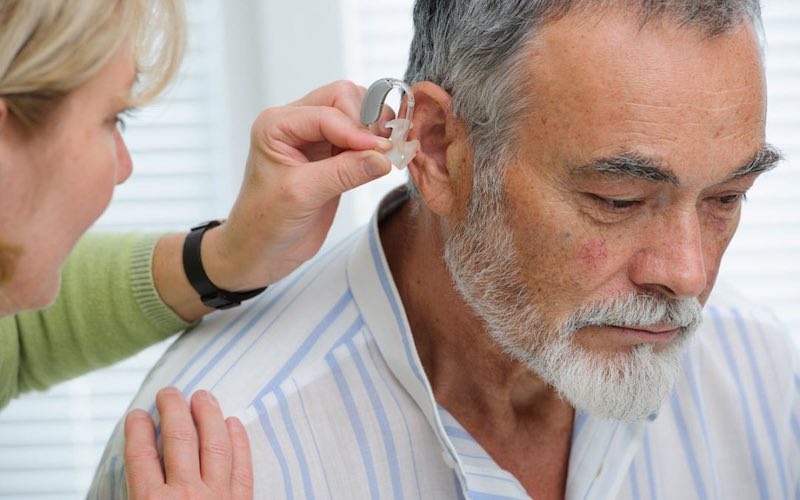Personal Hearing Amplifiers, or ear amplifiers, officially referred to as Personal Sound Amplification Products (PSAPs), look and function very much like hearing aids. The difference is that they are designed to be used without the assistance of a hearing professional.
The advancement in the technology of aids and Personal Hearing Amplifiers in recent years has been impressive. Many of the options built into high-end hearing aids are also available in PSAPs at a price which may surprise you.
The following outline of the Top 6 Features of PSAPs will give you some things to consider as you decide which hearing amplifier is best for you.
- Feedback Cancellation – Not only can the high feedback squeal of hearing devices be annoying to the wearer, it can also be a distraction to others near the wearer. Many hearing amplifiers come in several colors to camouflage them visibly (black, silver, or beige to match hair color), but that camouflage is blown when the device alerts everyone in the room to its presence. If using an amplifier without being noticed is important to you, look for a feedback cancellation feature.
- Omnidirectional and Directional Options – One of the most common complaints of those who have hearing issues is difficulty hearing in environments with lots of background noise. Some personal hearing amplifiers come with functionality which reduces that background noise and gives the wearer a more focused sound amplification in the direction in which the head is turned. This is similar to the way blinders work on a horse. The sound coming from the sides and back of the wearer are reduced and the sound coming in front is magnified. Some PSAPs come with an omnidirectional (consistent “surround-sound” amplification) setting which is best for quiet environments like business meetings and a directional setting which is best for more noisy environments like a restaurant.
- Telecoil Functionality – Sometimes referred to as “T-coil”, telecoil functionality gives the wearer the option to use a telephone-specific setting which enhances the ability to hear well in phone conversations. Without this option, personal hearing amplifier wearers are often forced to put a smartphone on speaker, which is often inconvenient or embarrassing. If you want to be able to hear phone conversations well, look for the telecoil option.
- Preprogrammed algorithms – Hearing aids are extremely customizable, but require the assistance of a professional to personalize the programs which produce the optimal sound for the wearer. But there are generally a few algorithms or formulas which work well for most people who struggle with hearing. Some hearing amplifiers preprogram these common algorithms into the device, so the wearer can cycle through to find the one that works best.
- Ease of Use – Having these helpful features is only beneficial if you can adjust them quickly and easily while you’re living your life. Look for instructional videos which demonstrate how to access the different functions. Are the buttons easy to get to? Are the reporting sounds intuitive? Does the device alert you when the battery is running low?
- Ease of Maintenance – Personal hearing amplifiers are highly sensitive devices which go with you through lots of conditions in everyday life. Moisture is the most common culprit for amplifier degradation. Batteries will need to be changed each week. Tubing will need to be replaced about every six months. The tubing sometimes gets clogged. Does the amplifier come with tools for cleaning and replacement parts? Is it easily disassembled for cleaning? Does it come with a daily drying device?
The Tweak Focus and Focus+T (Telecoil) have been designed with all of these considerations in mind. Check out the following video of inventor and audiologist Dr. Daniel Schumaier demonstrating some of the options you should consider when shopping for a personal hearing amplifier.

